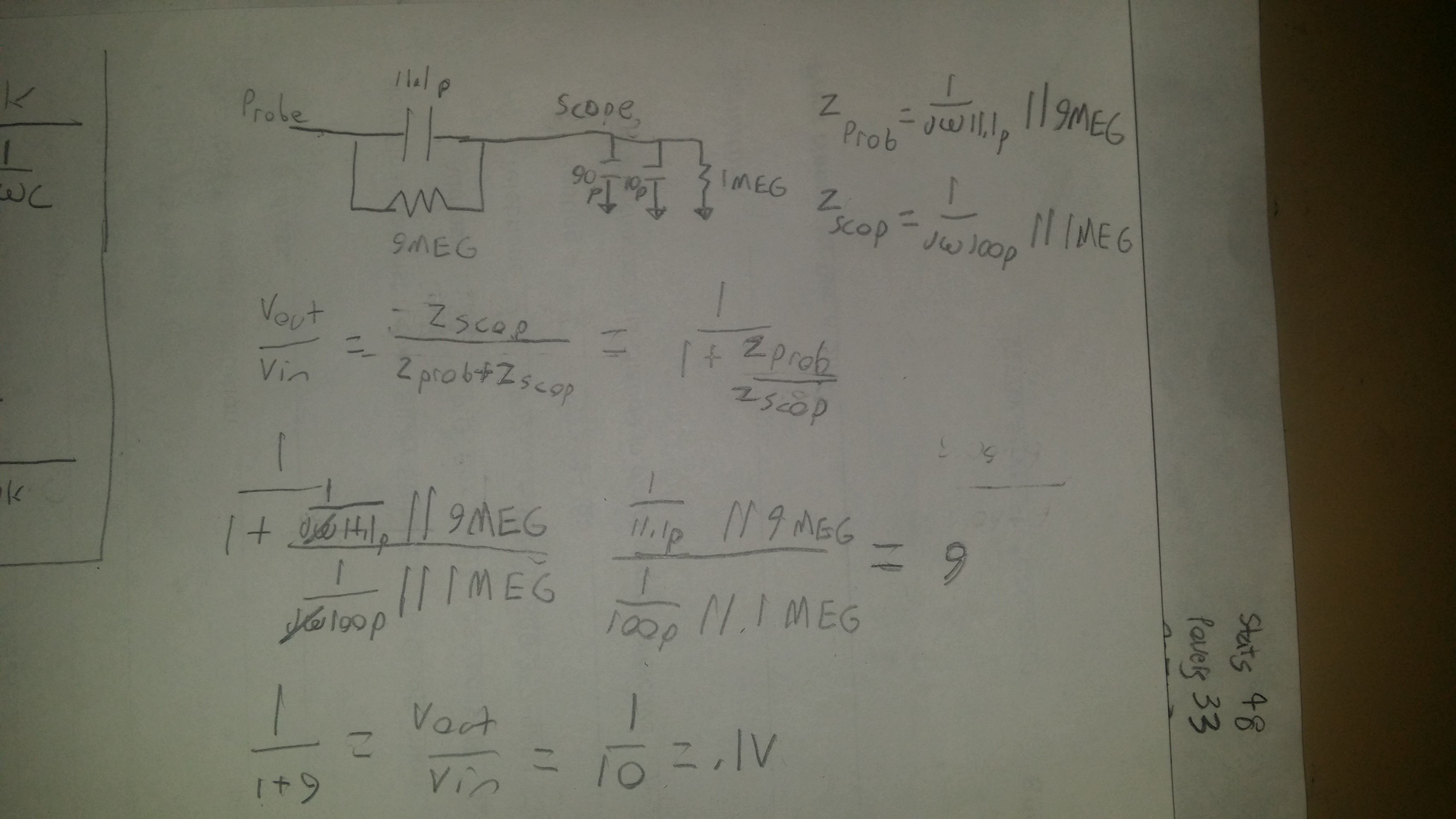
Lab 2 - EE 420L
In this lab we reviews scope probe compensation and capacitence of a coaxial cable
Both the scope input and coaxial cable have a built in capacitence and resistance, because of this the probe needs to have another resistor and capacitor to minimize the effect. they do this with a voltage divider between 2 complex impedances the division is noted in the ratio used to describe the probe, 10:1, 100:1, 5:1 ect. since each scope has a slightly different impedance probes can be adjusted to maintain their ratios thus giving a correct output. we call probes which have nto been adjusted undercompensated and overcompensated
Hand calculations for a 10:1 Scope Probe
these hand calculation show that a 10:1 scope probe acts like a comples 1/10 voltage divider
Compensated Scope Probe:
Coaxial Cable as a Capacitor
for the next experiment attempted to use a 3ft cable as a capacitor in an RC circuit with a 100k Resistor. We then measured the delay of the AC signal (ad W=2pi*10k) to calculate the capacitence of the cable (.213nf)
Voltage Divider measured with cable vs probe
since both a cable and probe have a capacitence both deliver a sawtooth output as opposed to a square wave. we should also see a voltage difference between the two inputs of about 10:1, in this case 7:1, due to the compensation in the probe.
| Voltage divider measured with cable | Voltage divider measure with prob |